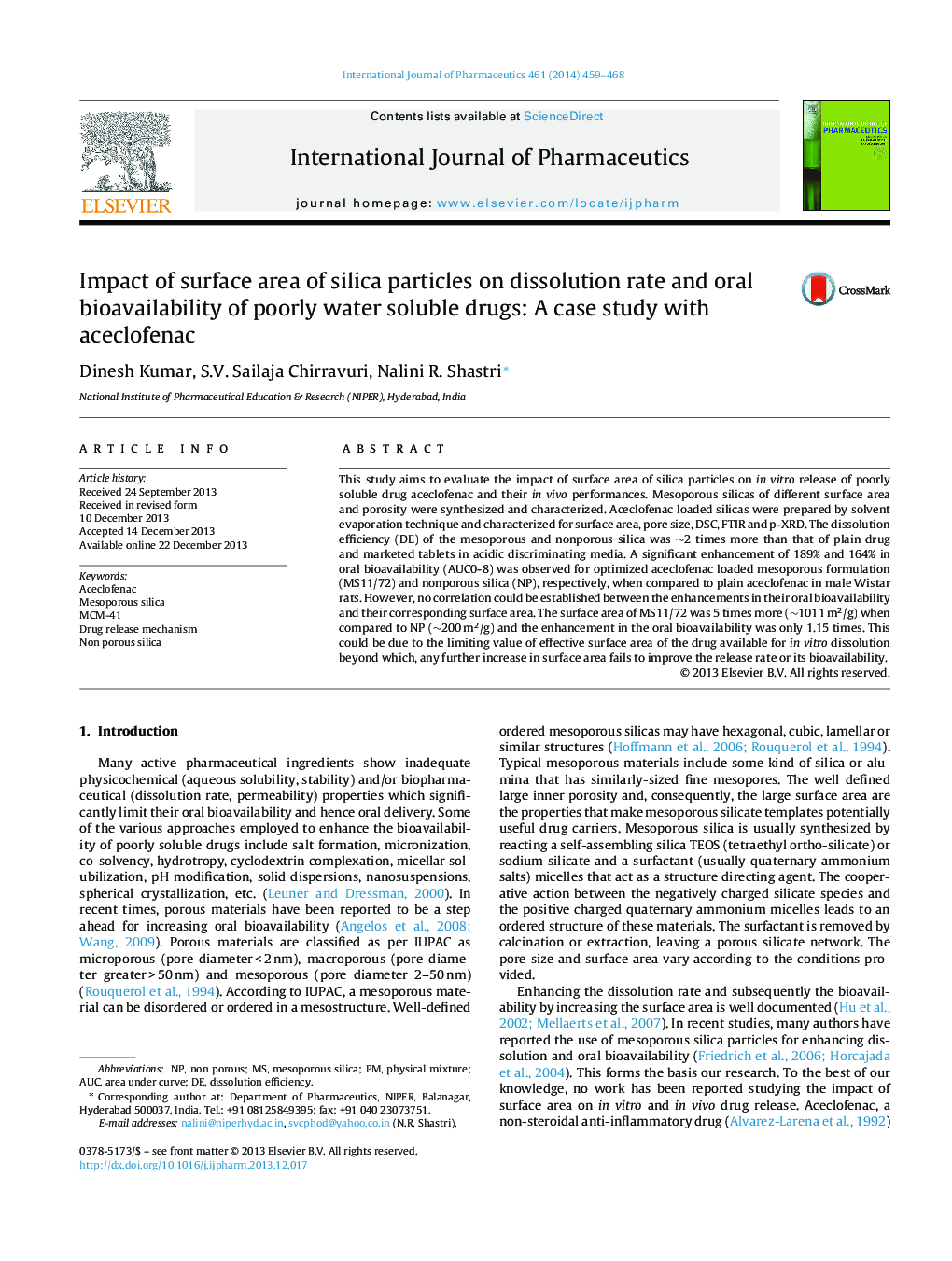| Article ID | Journal | Published Year | Pages | File Type |
|---|---|---|---|---|
| 2501943 | International Journal of Pharmaceutics | 2014 | 10 Pages |
This study aims to evaluate the impact of surface area of silica particles on in vitro release of poorly soluble drug aceclofenac and their in vivo performances. Mesoporous silicas of different surface area and porosity were synthesized and characterized. Aceclofenac loaded silicas were prepared by solvent evaporation technique and characterized for surface area, pore size, DSC, FTIR and p-XRD. The dissolution efficiency (DE) of the mesoporous and nonporous silica was ∼2 times more than that of plain drug and marketed tablets in acidic discriminating media. A significant enhancement of 189% and 164% in oral bioavailability (AUC0-8) was observed for optimized aceclofenac loaded mesoporous formulation (MS11/72) and nonporous silica (NP), respectively, when compared to plain aceclofenac in male Wistar rats. However, no correlation could be established between the enhancements in their oral bioavailability and their corresponding surface area. The surface area of MS11/72 was 5 times more (∼1011 m2/g) when compared to NP (∼200 m2/g) and the enhancement in the oral bioavailability was only 1.15 times. This could be due to the limiting value of effective surface area of the drug available for in vitro dissolution beyond which, any further increase in surface area fails to improve the release rate or its bioavailability.
Graphical abstractFigure optionsDownload full-size imageDownload high-quality image (290 K)Download as PowerPoint slide
